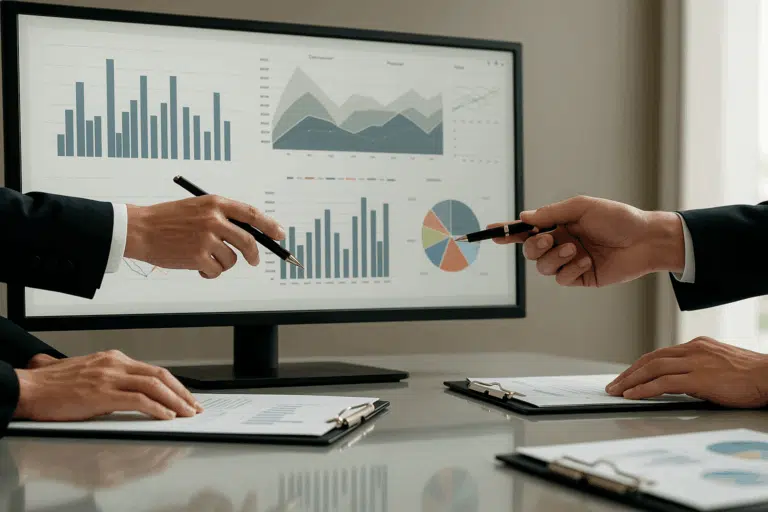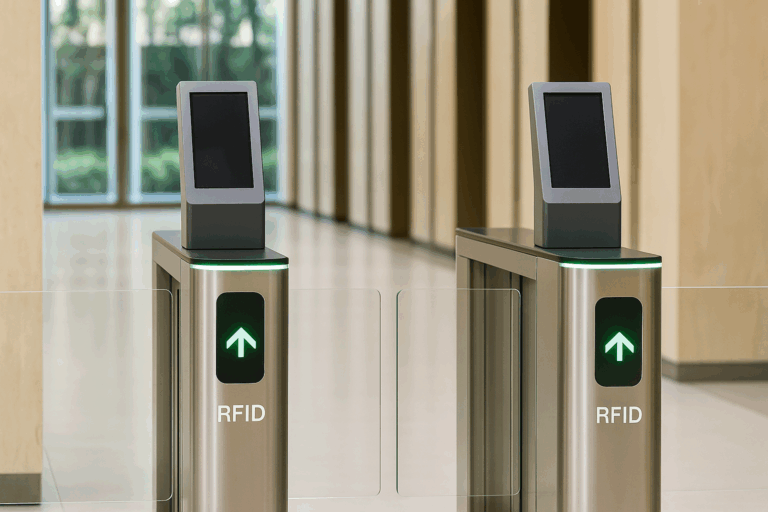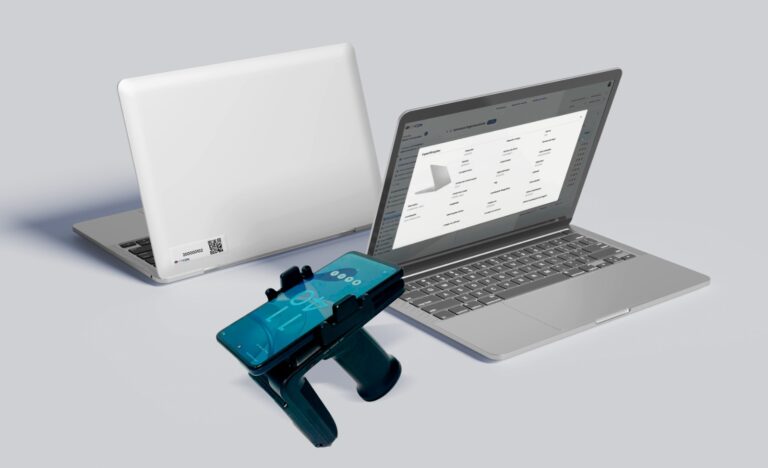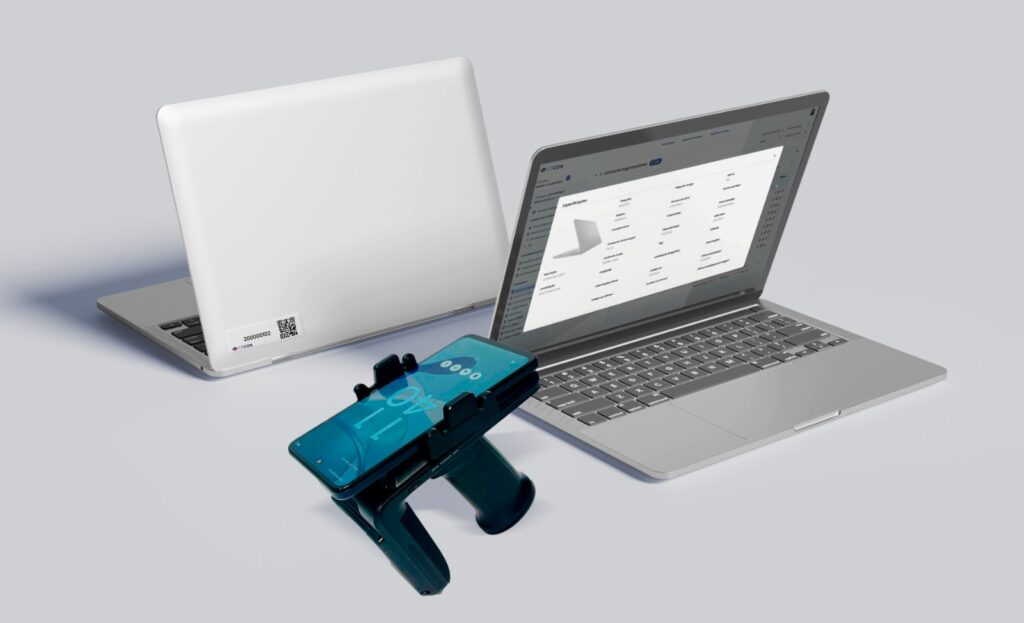Fixed asset depreciation is more than a line on your balance sheet — it’s a critical tool for achieving financial accuracy, managing taxes, and ensuring regulatory compliance.
Depreciation of fixed assets refers to the systematic reduction in value of tangible assets like machinery, buildings, and vehicles. This process reflects the economic reality that assets lose value over time due to usage, wear and tear, or obsolescence. More than a technical accounting practice, it has a direct impact on tax deductions, asset management strategies, and investment decisions.
Understanding how to apply fixed asset depreciation properly helps businesses align their financial reports with the true condition of their operations. From small companies to multinational corporations, a precise depreciation strategy supports smarter planning, better cash flow, and transparency for stakeholders.
In this guide, you’ll learn how to calculate depreciation of fixed assets, choose the right method, avoid common mistakes, and apply industry best practices. You’ll also discover how software, data integration, and automation tools simplify depreciation management across complex asset portfolios.
Let’s dive in.

Table of Contents
ToggleWhat Is Fixed Asset Depreciation and Why It Matters
Fixed asset depreciation refers to the gradual reduction in value of tangible business assets over their useful lives. This decrease is recorded as a non-cash expense in financial statements, helping companies reflect the true economic consumption of assets like equipment, buildings, or vehicles.
From an accounting perspective, depreciation ensures that the cost of a fixed asset is allocated fairly across the periods in which it generates revenue. Without it, financial statements would overstate asset values and distort profitability.
For tax purposes, depreciation of fixed assets is also a key strategy. Most jurisdictions allow businesses to deduct depreciation expenses, reducing taxable income. Choosing the right method and applying it accurately can significantly improve cash flow and long-term financial planning.
Neglecting proper depreciation practices can lead to overstated asset values, tax penalties, and impaired decision-making. On the other hand, accurate depreciation builds confidence in financial reports and provides a reliable basis for audit readiness and investment planning.
Accounting vs. Tax Depreciation
| Aspect | Accounting (GAAP / IFRS) | Tax (IRS / MACRS) |
| Purpose | Reflect the actual economic loss of asset value | Maximize allowable tax deductions |
| Method Selection | Based on asset usage pattern and financial strategy | Prescribed by tax codes like MACRS |
| Useful Life | Estimated according to expected economic benefit | Defined by legal asset classes |
| Salvage Value | Considered in depreciation calculation | Generally ignored (assumed to be zero) |
| Method Flexibility | High — straight-line, DDB, SYD, UoP, etc. | Limited — accelerated methods often mandatory |
| End Goal | Accurate financial statements and audit readiness | Reduce taxable income and increase cash flow |
Fixed Assets vs. Intangible Assets: What’s the Difference?
Not all long-term assets are the same. Businesses often rely on both fixed (tangible) and intangible assets to operate, but they differ in form, usage, and how depreciation or amortization applies.
What are Fixed Assets?
Fixed assets are physical, tangible items that a company uses over time to produce goods, deliver services, or support operations. They are not meant for resale and typically have a useful life of more than one year.
Examples of fixed assets:
● Office buildings
● Machinery and equipment
● Company vehicles
● Furniture
● Land improvements
● Computers and hardware
Fixed assets are depreciated because they wear out, break down, or lose efficiency with time.
What are Intangible Assets?
Intangible assets are non-physical resources that still hold value for the business. They don’t have a physical presence but can generate long-term benefits. Most intangibles are amortized instead of depreciated.
Examples of intangible assets:
● Trademarks and brand names
● Patents and copyrights
● Software licenses
● Customer lists and goodwill
● Franchise agreements
● Non-compete contracts
Because they don’t degrade physically, intangible assets follow different accounting and tax rules — especially in how value is assigned and reduced over time.
Why This Distinction Matters
Understanding the difference helps ensure your asset management, depreciation schedules, and tax reporting are accurate. While both types support your business value, only fixed assets go through traditional depreciation. Intangibles require separate treatment, which can impact audits, compliance, and valuation.

Accounting vs. Tax Depreciation: Rules and Strategic Use
Depreciation can serve different goals depending on the context — financial reporting or tax optimization. While both aim to allocate the cost of a fixed asset over time, the rules, flexibility, and outcomes vary significantly.
Purpose and Strategy
Accounting depreciation (under GAAP or IFRS) reflects the true economic use of an asset. It’s used to present accurate financial statements and is typically tailored to how the asset performs over time.
Tax depreciation, on the other hand, follows government regulations to determine how much of an asset’s cost can be deducted annually. The goal is not accuracy but maximizing deductions to reduce tax liability.
Key Differences Overview
| Aspect | Accounting Depreciation | Tax Depreciation |
| Objective | Financial transparency and accuracy | Minimize taxable income |
| Method Selection | Chosen by company (e.g., SL, DDB, SYD) | Mandated by tax code (e.g., MACRS) |
| Salvage Value | Included in calculation | Often ignored or assumed zero |
| Useful Life | Based on expected asset performance | Based on legal asset class |
| Flexibility | High – method and estimate revisions allowed | Limited – strict regulatory guidance |
| Reporting Use | Financial statements, audits | Tax filings and compliance |
Strategic Implications
Using different methods for tax and accounting is not only legal — it’s common. For example, a company might use straight-line depreciation in its financial books to show steady performance, but apply double-declining balance under MACRS to speed up tax deductions.
Businesses must track both values separately:
● Book value for internal reporting and stakeholders
● Tax basis for compliance and cash flow optimization
The strategic use of both systems allows companies to manage profits for reporting while also maximizing tax savings — as long as the records are well maintained and reconciled.
Main Depreciation Methods Explained (With Examples)
Different depreciation methods allocate asset cost in different ways. Choosing the right one affects how your financial results look, how fast you recover value, and how well you reflect real-world usage.
Here are the most common depreciation methods used by businesses — along with simple examples and when to use each.
Summary Table: Common Depreciation Methods
| Method | Formula | Best For | Type |
| Straight-Line (SL) | (Cost – Salvage) ÷ Useful Life | Assets with steady value loss (buildings) | Time-based |
| Declining Balance (DB) | Book Value × Depreciation Rate | Tech, machinery with early value drop | Accelerated |
| Double-Declining Balance | Book Value × (2 ÷ Useful Life) | Fast-depreciating assets (computers) | Accelerated |
| Sum-of-Years’ Digits (SYD) | (Remaining Life / SYD Total) × (Cost – Salvage) | Front-loaded depreciation | Accelerated |
| Units of Production (UoP) | (Cost – Salvage) ÷ Estimated Units × Units Used | Usage-based assets (vehicles, tools) | Usage-based |
Examples of How Each Method Works
Let’s say you buy a machine for $50,000, with a salvage value of $5,000 and a useful life of 5 years.
- Straight-Line (SL)
○ Depreciation: (50,000 – 5,000) ÷ 5 = $9,000 per year
○ Even expense every year
- Declining Balance (DB)
○ Assume 40% rate: Year 1 = 50,000 × 40% = $20,000
○ Year 2 = (50,000 – 20,000) × 40% = $12,000, and so on
- Double-Declining Balance (DDB)
○ Rate = 2 × straight-line rate = 40%
○ Similar to DB but even faster
- Sum-of-the-Years’ Digits (SYD)
○ Total years = 5, sum = 1+2+3+4+5 = 15
○ Year 1 = (5/15) × (50,000 – 5,000) = $15,000
○ Year 2 = (4/15) × (50,000 – 5,000) = $12,000, and so on
- Units of Production (UoP)
○ Estimated output = 100,000 units; Year 1 = 20,000 units
○ Depreciation = (50,000 – 5,000) ÷ 100,000 × 20,000 = $9,000
Which Method Should You Choose?
● Choose Straight-Line for simplicity and consistency.
● Use Accelerated methods (DDB, SYD) if assets lose value fast or provide higher value upfront.
● Use Units of Production when usage is variable and trackable.
The method you pick should match the economic reality of the asset — how and when it delivers value.

How to Calculate Fixed Asset Depreciation Step-by-Step
Calculating depreciation isn’t complicated once you know the basic elements involved. Every method needs the same three core values:
| Variable | Meaning | Example Value |
| Cost | Purchase price + shipping + installation | $50,000 |
| Useful Life | Estimated number of years the asset will last | 5 years |
| Salvage Value | Expected value at the end of useful life | $5,000 |
With these values, you apply a formula depending on the method you choose. Here’s how it works in practice:
Example: Straight-Line Method
Let’s say you bought equipment for $50,000. It will last 5 years and have a $5,000 value at the end.
● Formula: (Cost – Salvage Value) ÷ Useful Life
● Calculation: (50,000 – 5,000) ÷ 5 = $9,000 per year
This means you’ll record $9,000 as a depreciation expense every year for five years.
Steps to Calculate Depreciation for Any Method
- Identify the asset’s total cost (including all related expenses).
- Estimate its useful life in years or usage units.
- Estimate the salvage value based on resale, trade-in, or scrap.
- Select the depreciation method that fits the asset’s usage pattern.
- Apply the formula each year or based on usage.
- Track and update the book value over time.
Using software makes this process easier, especially when managing many assets or multiple depreciation methods across regions or tax regimes.
How Depreciation Affects Financial Statements
Depreciation doesn’t just reduce the value of an asset — it flows through your financial reports and shapes how your business performance is measured. It’s a non-cash expense, but it affects three main financial statements in very different ways.
Where Depreciation Appears in Financial Reports
| Financial Statement | Role of Depreciation | Impact |
| Income Statement | Shown as an operating expense | Reduces net income |
| Balance Sheet | Recorded as accumulated depreciation (contra-asset) | Reduces the asset’s book value |
| Cash Flow Statement | Added back to net income in the operating activities | Shows depreciation doesn’t affect cash |
Why This Matters
● On the income statement, depreciation lowers your reported profit — even though you didn’t actually spend money that year.
● On the balance sheet, it reduces the asset’s value gradually, reflecting wear and usage.
● On the cash flow statement, it’s added back to income to show true cash flow, since depreciation doesn’t use cash.
Understanding this helps you analyze your financials better. You’ll see why a profitable company can still have healthy cash flow — or why net income doesn’t always tell the whole story.
Depreciation and Tax Compliance: Benefits and Obligations
Depreciation isn’t just an accounting tool — it’s a legal strategy that directly affects how much tax your business pays. When applied correctly, it lowers taxable income and improves cash flow. But to enjoy these benefits, companies must follow the rules set by tax authorities.
How Depreciation Reduces Taxes
Most tax systems let you deduct depreciation as a business expense. This means:
● Your taxable income goes down
● Your business pays less in taxes
● You keep more cash to reinvest
In the US, for example, businesses use MACRS — the Modified Accelerated Cost Recovery System. This method gives faster write-offs for most assets, especially in the early years.
Other tax incentives include:
● Section 179: lets small and mid-size businesses deduct the full cost of eligible assets upfront
● Bonus depreciation: allows a large portion (sometimes 100 percent) of an asset’s cost to be deducted in the first year
These incentives change from year to year, so it’s important to stay updated.

Tax Compliance Requirements
To claim depreciation on your taxes, you need to:
● Classify the asset correctly under tax codes
● Use the appropriate recovery period (useful life for tax)
● Apply the correct method (like 200 percent DB under MACRS)
● Keep detailed records for each asset: purchase date, cost, location, and usage
Failure to follow these steps can result in:
● Disallowed deductions
● Fines or interest during tax audits
● Delays in financial reporting
Example: Tax Depreciation in Action
Imagine a company buys a delivery van for 40,000 dollars. Under MACRS, it may deduct:
● 8,000 dollars in Year 1 (bonus depreciation)
● 6,400 dollars in Year 2 (20 percent)
● 3,840 dollars in Year 3 (16 percent), and so on
Instead of spreading the cost evenly, the business gets larger deductions early on — reducing tax payments when cash needs are highest.
Depreciation, when handled properly, becomes a valuable part of your tax strategy. But misuse or poor documentation can turn benefits into risks.
GAAP vs. IFRS Depreciation Rules: A Practical Comparison
While both GAAP (Generally Accepted Accounting Principles) and IFRS (International Financial Reporting Standards) require businesses to depreciate fixed assets, they differ in how flexible the rules are and how companies apply them in practice.
Understanding these differences is important for companies that operate across countries or need to align with multiple regulatory standards.
Key Differences Between GAAP and IFRS
| Area | GAAP (US) | IFRS (International) |
| Component Depreciation | Optional | Required when components have different lives |
| Method Flexibility | Straight-line, DDB, SYD, UoP | Same options but allows more judgment |
| Residual (Salvage) Value | Required in calculation | Required |
| Revaluation of Assets | Not allowed | Allowed for some asset classes |
| Change in Method | Considered a change in accounting principle | Treated as change in estimate |
| Disclosure Requirements | Less detailed | More comprehensive and specific |
What This Means for Businesses
IFRS allows more judgment and often requires more detailed tracking of asset components. For example, a building under IFRS may be split into parts: structure, elevators, HVAC, and roofing — each with its own useful life and depreciation method.
GAAP, by contrast, tends to keep depreciation simpler unless the company chooses to break down components.
If your company operates in both US and international markets, you may need to maintain two sets of books or reconcile the different approaches during reporting.

Common Depreciation Mistakes and How to Avoid Them
Even small errors in depreciation can lead to incorrect financial statements, tax issues, or poor planning decisions. Below are some of the most common mistakes businesses make — and how to fix them.
Frequent Mistakes and Solutions
| Mistake | Consequence | How to Avoid It |
| Using the wrong useful life | Over or under-depreciation | Review and adjust asset life annually |
| Ignoring salvage value | Skewed depreciation calculations | Estimate realistic residual value |
| Depreciating assets no longer in use | Inflated expenses and errors in books | Remove or retire assets in the system |
| Applying the wrong method | Misaligned depreciation with asset usage | Match method to asset type and performance |
| Not tracking repairs or improvements | Inaccurate asset value | Update records after any major changes |
| Manual errors in spreadsheets | Time-consuming corrections and audits | Use dedicated asset management software |
Simple Tips to Prevent Mistakes
● Review your asset register once a year
● Train staff on how to record asset changes
● Use checklists for onboarding and disposal
● Automate depreciation tracking wherever possible
Mistakes in depreciation often come from poor documentation or lack of system support — not bad intent. With good practices in place, you reduce risks and simplify audits.
Best Practices for Managing Fixed Asset Depreciation
Good depreciation management isn’t just about applying the right formula — it’s about creating a system that’s clear, consistent, and ready for audits.
Here are the most effective best practices, organized by stage of the asset lifecycle:
1. Acquisition and Setup
● Record all asset details from day one: cost, location, responsible department
● Include installation, delivery, and setup costs in the total asset value
● Use barcode or RFID tagging for easy tracking
2. Depreciation Strategy
● Choose depreciation methods that match the asset’s usage
● Separate components with different useful lives (e.g., roof vs. building structure)
● Review useful life estimates annually
3. Monitoring and Adjustments
● Schedule periodic audits to confirm asset condition and location
● Update records after major repairs, moves, or usage changes
● Retire assets promptly when taken out of use
4. Automation and Software
● Use asset management software to automate depreciation entries
● Integrate systems with accounting and tax software
● Set alerts for review dates, replacements, and end of useful life
5. Reporting and Compliance
● Maintain clean, auditable records for each asset
● Align financial and tax depreciation where appropriate
● Ensure consistency across locations and departments
These practices reduce human error, improve visibility, and help your business stay compliant — while maximizing the value you get from every asset.

What Happens After Full Depreciation of an Asset
When an asset is fully depreciated, it means the business has allocated all of its original cost over its useful life. But that doesn’t mean the asset disappears or no longer matters.
Here’s what actually happens:
1. Asset Stays on the Books
The asset remains on the balance sheet with a book value of zero. It stays listed until it’s sold, disposed of, or written off. Even though it’s fully depreciated, you still need to track it for operational, compliance, or insurance purposes.
2. No More Depreciation Expense
Once the full value has been written off, you stop recording depreciation. The accumulated depreciation account will now equal the asset’s cost, and no new expense is posted.
3. If You Continue Using the Asset
Many fully depreciated assets are still in use — especially equipment or vehicles. Keep them on the asset register and continue monitoring their condition, location, and use.
4. If You Sell or Dispose the Asset
You must remove the asset from your books. If you sell it, any income becomes a gain and may be taxable. If you scrap it, make sure disposal is documented and reflected in the records.
5. Considerations for Replacement
A fully depreciated asset is often a signal that it may be time to invest in a replacement. Use the opportunity to reassess needs, budget, and lifecycle strategies.
Full depreciation is not the end of the asset’s story — just the end of its accounting value. What happens next depends on how you manage the asset physically and strategically.
How to Track and Automate Fixed Asset Depreciation
Manually tracking depreciation is time-consuming, error-prone, and hard to scale. That’s why most companies use dedicated software and tagging technologies to manage their assets with accuracy and speed.
Benefits of Automating Depreciation
● Eliminates spreadsheet errors
● Saves time on monthly or annual entries
● Standardizes depreciation across departments and locations
● Provides real-time reports for audits and tax filing
● Helps manage asset lifecycle from acquisition to disposal
What to Look For in a Fixed Asset Management System
● Centralized asset database with customizable fields
● Automated depreciation calculation based on chosen method
● Audit-ready reporting for financial and tax purposes
● Alerts for end-of-life, reviews, and replacements
● Integration with ERP or accounting software
How RFID and Barcodes Help
● Tag each asset with a unique barcode or RFID label
● Scan items to update location, usage, or condition
● Prevent ghost assets and duplicate entries
● Link scanned data to the asset’s full history and value
Example Workflow
- Asset is purchased and tagged with an RFID label
- Software logs cost, location, useful life, and method
- Depreciation is calculated automatically every month
- Reports are generated for accounting, audits, or tax returns
- Alerts notify teams when asset needs review or replacement
Automation doesn’t just simplify depreciation — it makes your asset control stronger, more transparent, and ready for audit at any time.
Conclusion
Fixed asset depreciation isn’t just a technical process. It’s a financial strategy that helps businesses make smarter decisions, reduce tax burdens, and present clearer financial statements.
When done right, depreciation reveals the true value of your assets over time. It helps you avoid surprises, track your resources, and stay compliant with tax and accounting rules. But more than that, it gives you control — control over your reporting, your planning, and your ability to grow with confidence.
Whether you’re running a single-location business or managing assets across multiple countries, a clear depreciation policy supported by reliable systems is key to long-term financial accuracy.
Take the Next Step with CPCON
Want to go deeper into fixed asset management?
Explore our expert resources, tools, and strategies to help your team simplify asset tracking, automate depreciation, and improve audit readiness.
Visit our blog for more insights or talk to one of our specialists and discover how CPCON can support your financial goals with precision and control.
Frequently Asked Questions (FAQ)
What is fixed asset depreciation and why is it important?
Fixed asset depreciation is the process of spreading the cost of a tangible asset over its useful life. It helps businesses reflect the true value of assets in financial reports, reduce taxable income, and plan for future replacements or upgrades.
Which depreciation method is best for my business?
The best method depends on how your asset loses value. Straight-line is simple and steady, while methods like double-declining balance or units of production are better if the asset loses value faster or based on usage. The key is choosing what matches the asset’s real behavior.
How do I calculate depreciation for fixed assets?
You need the asset’s purchase cost, estimated useful life, and expected salvage value. Then apply the chosen method’s formula. Using depreciation software helps automate this process and reduce manual errors.
Can fixed asset depreciation lower my taxes?
Yes. Depreciation is a deductible business expense. Most tax systems — like MACRS in the US — allow you to reduce your taxable income through depreciation deductions. Just be sure to follow local tax laws and keep clear records.
How does CPCON help with asset depreciation and control?
CPCON offers integrated solutions for asset tracking, inventory control, and automated depreciation. With tools like RFID, data management, and audit-ready reports, CPCON helps businesses manage fixed assets efficiently and stay fully compliant.























